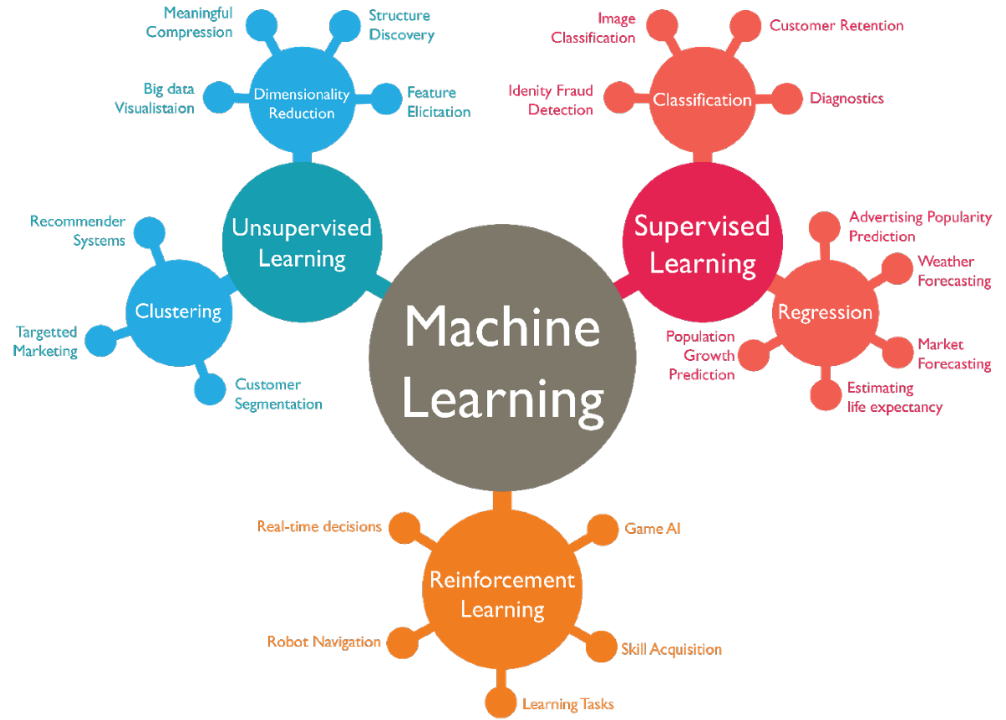Machine Learning (ML) is one of the significant fields in technology. It is at the heart of AI tools, and powering applications in healthcare, banking, finance, and marketing. The idea of developing the first machine-learning model seems to be challenging. The fact is that with the support, appropriate tools, and correct guidance anyone can begin. The machine learning model refers to the program that learns from data and helps in making predictions without being explicitly programmed. In this blog, we will discuss the steps required for creating the first machine model as data science beginners.
Steps to Create a Machine Learning Model
Step 1: Defining the Problem
Each machine-learning project begins by defining the problem that you want the model to solve. It helps the data science beginners in predicting a value, grouping similar data points, and classifying data Machine learning models are designed for solving specific problems whether it is predicting the prices of housing, or identifying the objects in an image. However, it is crucial to understand the nature of the problem as it helps in selecting the correct machine-learning algorithm and determining the type of data required. It is pivotal to define the goal of a learning model clearly like achieving high accuracy or explaining the relationship between target variables or features.
Step 2: Collecting and Preparing Data
The foundation for creating any machine learning model is data. It can be created using datasets from online repositories such as the UCI Machine Learning Repository. The library of Python like Panda makes it convenient to manipulate data. Once you have your dataset the next step is to prepare data which includes transforming and cleaning the data in a format suitable for machine learning algorithms. This process involves handling classified data, standardizing numerical figures, and dealing with missing values. For example – if an individual is working with housing data might find some missing values in the number of bedrooms. Preparing data is significant because poor quality data will lead to poor performance of the model even if an advanced machine learning algorithm is being used.
Step 3: Splitting the Data
After preparing the data the next step is to split the data into testing and training sets. This is the crucial step that assists in creating a machine-learning model because it enables an individual to assess how well the model performs on unseen data. Further, the dataset is split into a test set (the remaining 20 to 30%) and a training set (around 70 to 80% of the data). The testing set helps data science beginners in measuring how the model can be generalized while the training set helps teach the model by exposing it to several patterns in the data. Python’s sci-kit learn library assists in splitting data using the train_test_split function which helps ensure that the division is random. This aids in preventing any bias that might take place if the data is split manually.
Step 4: Selecting a Machine Learning Algorithm
To build your machine learning model it is significant to select a machine learning algorithm using a machine learning tutorial. The selection of the algorithm will be based on the type of problem an individual is trying to resolve. For example, – Linear regression helps in predicting the continuous values such as prices of houses but on the other hand, decision trees are suitable for classification tasks. However, regardless of selecting an algorithm, it is crucial to understand strengths, underlying assumptions, and limitations. Linear regression is suitable for simple relationships but it might not capture complex patterns in the data. Therefore, it might require more flexible algorithms such as neural networks or random forests.

Step 5: Training the Machine Learning Model
After selecting a machine learning algorithm for creating a machine learning model the next step is training the model. This process includes feeding the data into the machine-learning algorithm which will then learn from the patterns in the given dataset. In the context of linear regression, the model will try to navigate the best-fitting line that assists in reducing the error between the actual and predicted prices of houses. The success of the training process depends on several critical factors like choice of hyperparameters, quality of data and complexity of the algorithm. Hyperparameters refer to the settings that can help in optimizing the performance of the model like the number of decision trees in a random forest model or rate of learning.
Step 6: Evaluating the Machine Learning
After training the model the next step is to evaluate the model in terms of its performance on the test data. This step plays a crucial role as it helps in understanding whether the model can be generalized to unseen data or not. Sci-kit learn offers various metrics that aid in evaluating the performance of a model like mean squared error for regression tasks and maintaining accuracy within classification tasks. In our case, we are developing a regression model and we will use the MSE method to measure the distance between the predicted and actual price of a house. It is significant to avoid overfitting which refers to a situation where the model performs effectively on the training data while poorly on test data.
Step 7: Enhancing the Machine Learning Model
The next step after evaluating the performance of a model is to identify the areas of improvement. Various techniques can be used to improve your machine learning model such as feature engineering and hyperparameter tuning. Feature engineering helps in developing new features in the data. However, hyperparameter tuning aids in adjusting the parameters of the model which ensures enhanced performance.
Conclusion
Building your first machine-learning model might be challenging initially but by incorporating these steps it becomes convenient to create an effective machine-learning model. An individual must begin with defining the problem, collecting and preparing data, selecting an appropriate algorithm, training, evaluating, and enhancing the model. Leveraging tools like sci-kit Learn, and Python programming can help in creating a robust machine-learning model whether an individual is a beginner or looking to improve skills as a data science beginner.



Thanks for sharing. I read many of your blog posts, cool, your blog is very good.
Can you be more specific about the content of your article? After reading it, I still have some doubts. Hope you can help me.
Sure
Thanks for sharing. I read many of your blog posts, cool, your blog is very good.
Thank you for the good writeup. It in reality was once a entertainment account it.
Look complex to far added agreeable from you! By
the way, how could we communicate?
Thanks for sharing. I read many of your blog posts, cool, your blog is very good.